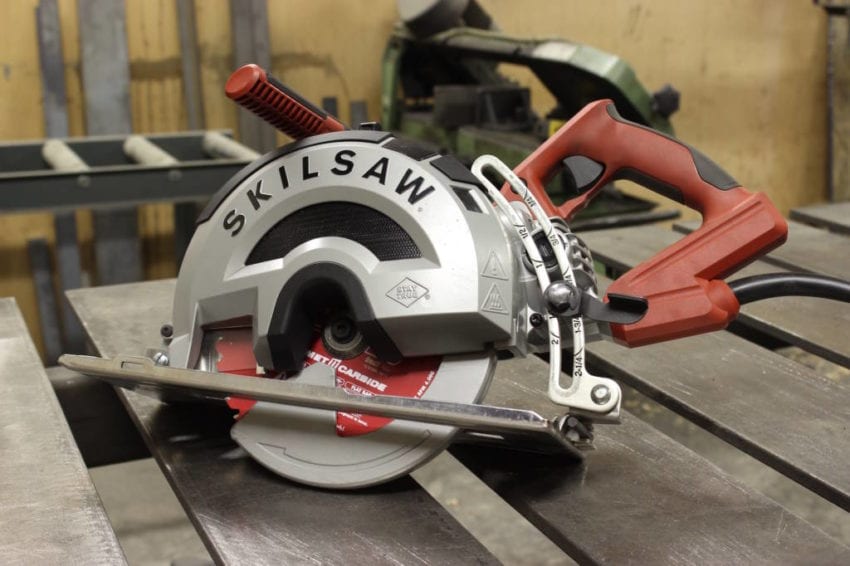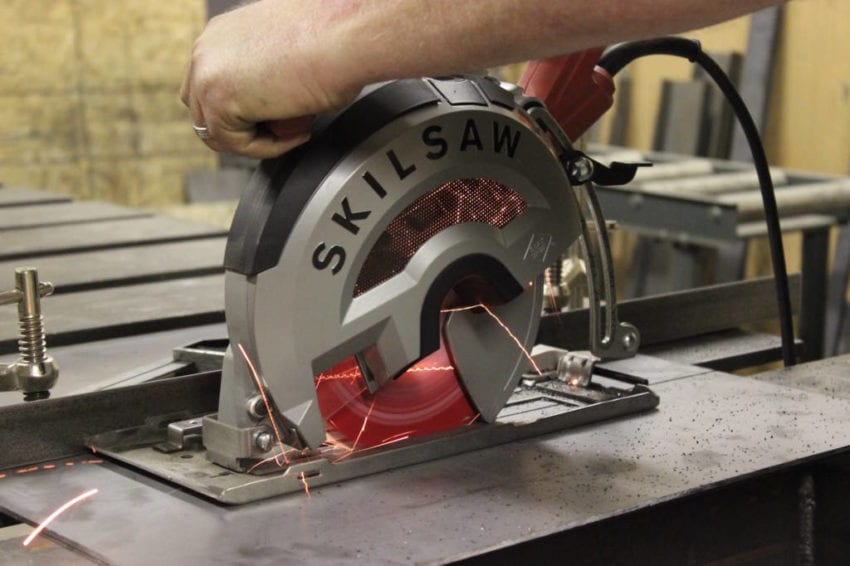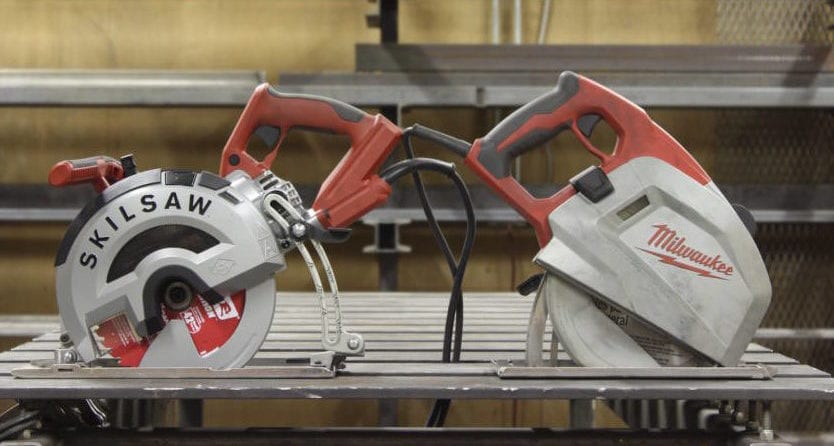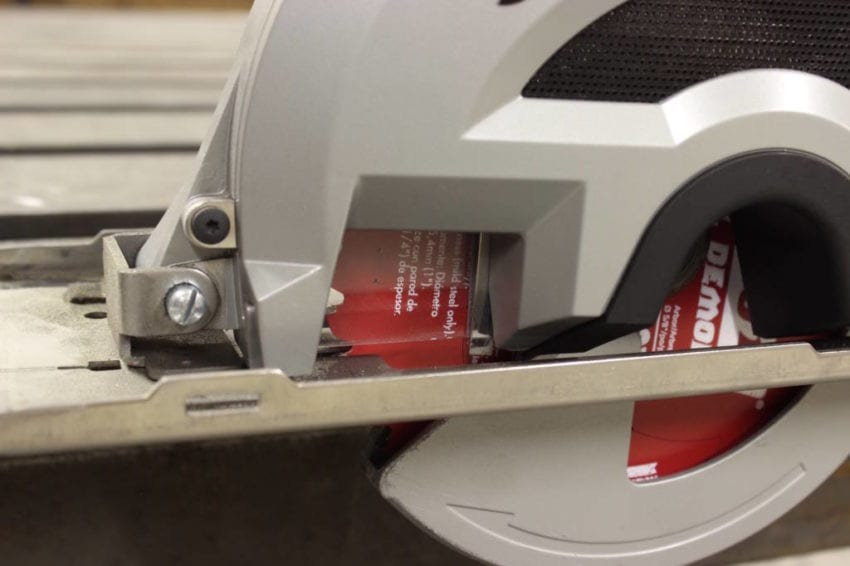Skilsaw’s worm drive hand-held circular saws have been around for almost 100 years now. They were so widely used by the professional tradesman for so long that the word “Skilsaw” had become synonymous with “circular saw” (like Sawzall and the reciprocating saw). However, in recent years the Skil brand became diluted with stocking stuffer, multi-use, gimmicky tools, and toolsets. A long-overdue rebranding was necessary to separate their professional-level tools. Having used several of their tools since the delineation, I had little doubt the Skilsaw Outlaw Metal Cutting Saw would be worth my attention.
I recently reviewed the Milwaukee 6370 8″ metal cutting saw. I use the 6370 for cutting metal tubing in custom jigs and metal sheets for tables and sliding doors, so I have a good bit of professional use experience with metal cutting circular saws. When I saw Skilsaw’s new SPT78MMC-22, it definitely looked the part of a professional-grade tool. I was eager to my hands on it and compare the worm drive saw to the 6370 sidewinder.
First Impressions
The first thing I noticed out of the box was that there was no case, not even a bag. I’m a big fan of hard cases; they definitely aid in extending tool life. I consider this a disappointment for a tool at this price point.
As expected, the Skilsaw Outlaw is noticeably heavier than Milwaukee’s 6370, a known characteristic of any worm drive circular saw.
As I familiarized myself with the weight, balance, and functions of the SPT78MMC-22, the outstanding build quality is self-evident. It’s an impressively stout saw, and the saw sits much firmer on its base than Milwakee’s 6370. The included Diablo blade is a nice touch – you don’t have to purchase the saw AND a quality blade to get going.
When comparing the design of the two saws, Milwaukee looks fairly lop-sided, having the motor oriented in line with the blade. With the cut depth set at only a 1/2 inch for 10 gauge steel sheets, Skilsaw’s motor and handle are almost all the way up.
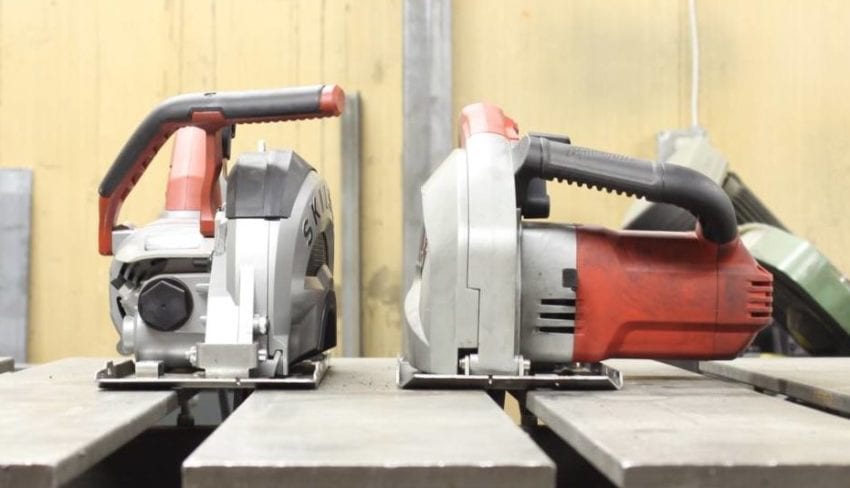
The well-balanced Skilsaw Outlaw feels much more stable at this angle. The blade position on the Skilsaw allows for a line of sight to view the actual cut as you’re making your pass.
At this depth, however, the Skilsaw handle is at a less comfortable angle than Milwaukee’s and the reach is a little farther since the handle is on the right side of the blade.
Using the Skilsaw Metal Worm Drive
The Skilsaw Outlaw is very smooth and easy to use; it cuts through steel like wood. The torque produced by the worm drive is significantly greater than the sidewinder style Milwaukee and the balance of the tool gives it more stability on the foot of the saw. The added stability will give you more accurate, cleaner cuts since the saw won’t wobble back and forth from the unbalanced weight of the motor.
Ergonomics
The Skilsaw SPT78MMC-22 is noticeably heavier when aligning the foot to the fence and lifting the saw on and off of the work piece. The weight difference doesn’t bother me for my type of use. I can certainly see how the lighter Milwaukee could be at an advantage on a jobsite, up and down ladders, single-handed use, etc…
Ripping a 24″ strip off of a 4’ x 8’ sheet of steel (or wood, for that matter) is challenging on any circular saw. You have to reach over a 2-foot section of material and guide the saw down your straight edge fence, all while balancing the saw near its highest setting (shallow plunge). It was in this specific cut that I noticed the difference in handle angles.
Milwaukee’s saw handle remains more vertical. I found it easier to push forward as I reached across the cut. Skilsaw’s handle actually sits a bit further away on the other side of the blade and rests at a more horizontal angle. The difference was noticeable to me, but that could very well be from my level of comfort with Milwaukee. That cut is not what I’d call comfortable on any saw—unless of course, I’m sitting comfortably with a margarita watching someone else make it.
Other Noticeable Differences
There were a few more differences worth noting; the sight windows on the Outlaw are great for double-checking your mark against the blade before starting your cut. Calculating 1/16 inch measurements and blade widths to get your fence at the right mark can make you second-guess yourself. That happens quite often given the price of materials these days!
The vented chip tray is a nice touch. Metal chips are hot and the tray is right next to the blade. The vent allows some heat to escape, keeping your blade cooler.
Blade change out is also easier for Skilsaw. Milwaukee’s blade exchange is very tight between the upper and lower blade guards while Skilsaw’s slides right in and out.
I also love the plunge lever. It’s easy to access and use with your left thumb without letting go of the handle.
Skilsaw Outlaw Worm Drive Metal Saw Specifications
- Model: Skilsaw SPT78MMC-22
- Drive: Worm Drive
- Motor: 15 Amp
- Blade Diameter: 8 Inches
- Max Cutting Depth: 2-3/4 Inches
- Weight: 15.4 Pounds
- Price: $299
- Warranty: 1-year
Final Thoughts
The balanced orientation of the Skilsaw Outlaw’s motor feels more stable as you cut. You can definitely feel the torque of the worm drive. We expect that given the reputation and track record of its design. Even though it’s heavier, Skilsaw’s design is superior in several areas. What I’d like to see them work on for the next generation is making that handle a bit more ergonomic when it comes to the angle and reach for cutting sheet metal in particular.
Skilsaw definitely came out swinging with the SPT78MMC-22. Although the lighter Milwaukee 6370 ($289) that comes with a case might be a better jobsite selection, the more powerful, worm-drive Skilsaw ($309) is worth the $20 premium for my shop. I’m on board with the professional rebrand and new product line. Next stop – more Skilsaw tools!

